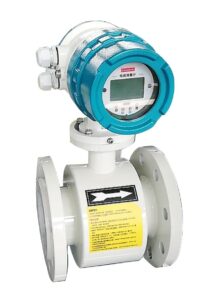The excitation frequency of most electromagnetic flowmeters is determined by the manufacturer according to the selection and design of the meter caliber, measuring medium, and flow conditions.
For example, small-diameter instruments use higher frequencies, large diameters use lower frequencies; single-phase liquids use lower frequencies, and slurries use higher frequencies.
If you choose this type of instrument, you don’t need to be selected by the user, but the excitation frequency of some electromagnetic flowmeters can be set by the user.
The performance of the low excitation frequency instrument is stable at zero points, but its resistance to slurry transition noise and flow noise is relatively poor: the high excitation frequency instrument has good performance in resisting slurry noise, but its zero-point stability is poor.
Users can weigh the pros and cons of this pair of contradictions according to the conditions of use, and choose settings.
For batching or filling with a short measuring time, in order to reduce the error, generally, a higher frequency is also selected.
Because liquid metal (normal temperature mercury, high-temperature sodium, potassium, bismuth) generates eddy current and skin effect under an alternating magnetic field, traditionally only DC magnetic field (permanent magnet or electromagnet) electromagnetic flowmeter is used for measurement.

